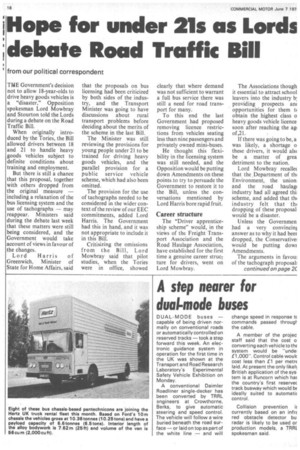A step nearer for dual-mode buses
Page 20

If you've noticed an error in this article please click here to report it so we can fix it.
DUAL-MODE buses — capable of being driven normally on conventional roads or automatically controlled on reserved tracks — took a step forward this week. An electronic guidance system in operation for the first time in the UK was shown at the Transport and Road Research Laboratory's Experimental Safety Vehicle Exhibition on Monday.
A conventional Daimler Roadliner single-decker has been converted by TRRL engineers at Crowthorne, Berks, to give automatic steering and speed control. The vehicle will follow a wire buried beneath the road surface — or laid on top as part of the white line — and will change speed in response tc commands passed througt the cable.
A member of the projec staff said that the cost o converting each vehicle to th( system would be "uncle' f1,000. Control cable woutc cost less than 1 per rnetr( laid. At present the only likel) British application of the sys tern is at Runcorn which hat the country's first reservec track busway which would ix ideally suited to automatic control.
Collision prevention it currently based on an infrt red obstacle detector bu radar is likely to be used or production models, a TRRL spokesman said.




























































































































































